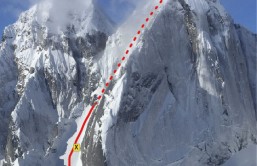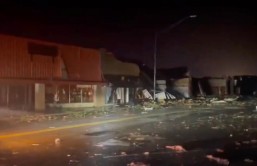New research further discredits the theory that a giant cosmic impact lead to the extinction of the mammoth and other living things from the same time period.
Researchers found Syrian rock soil droplets, which are formed from heat, most likely came from the Stone Age and later house fires, the University of California, Davis, reported. This finding disputes the 1980 theory that an ancient impact triggered the Younger Dryas cold period. The Younger Dryas spanned 1,000 years and coincided with the extinction of mammoths and the Paleo-Indian Clovis people.
To make their findings the researchers looked at siliceous scoria droplets (granulates formed through melting) from four Syrian sites that dated back between 10,000 and 13,000 years ago. These samples were compared with similar ones that had previously been theorized to be from an impact that occurred at the beginning of the Younger Dryas.
"For the Syria side, the impact theory is out," said lead author Peter Thy, a project scientist in the UC Davis Department of Earth and Planetary Sciences. "There's no way that can be done."
The findings show the composition of the scoria droplets was not related to foreign soil as would be expected in the case of an intercontinental impact. Analysis of the texture of the droplets as well as thermodynamic modeling suggests the droplets were formed by short-lived and moderate heating events as opposed to a catastrophic impact. The samples from the sites were observed to span a period of 3,000 years, which also disputes the popular theory.
"If there was one cosmic impact," Thy said, "they should be connected by one date and not a period of 3,000 years."
The region of Syria looked at in the study is associated with early agricultural settlements along the Euphrates River. The researchers believe most of the scoria formed when fires burned down local buildings made of soil and straw.
The findings were published in a recent edition of the Journal of Archaeological Sciences.








